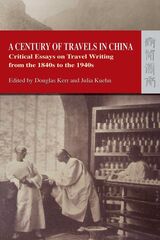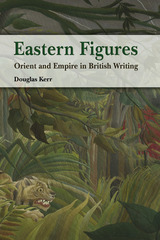2 books by Kerr, Douglas

A Century of Travels in China
Critical Essays on Travel Writing from the 1840s to the 1940s
Edited by Douglas Kerr and Julia Kuehn
Hong Kong University Press, 2007
Writings of travelers have shaped ideas about an evolving China, while preconceived ideas about China also shaped the way they saw the country. A Century of Travels in China explores the impressions of these writers on various themes, from Chinese cities and landscapes to the work of Europeans abroad. From the time of the first Opium War to the declaration of the People’s Republic, China’s history has been one of extraordinary change and stubborn continuities. At the same time, the country has beguiled, scared and puzzled people in the West. The Victorian public admired and imitated Chinese fashions, in furniture and design, gardens and clothing, while maintaining a generally negative idea of the Chinese empire as pagan, backward and cruel. In the first half of the twentieth century, the fascination continued. Most foreigners were aware that revolutionary changes were taking place in Chinese politics and society, yet most still knew very little about the country. But what about those few people from the English-speaking world who had first-hand experience of the place? What did they have to say about the “real” China? To answer this question, we have to turn to the travel accounts and memoirs of people who went to see for themselves, during China’s most traumatic century. While this book represents the work of expert scholars, it is also accessible to non-specialists with an interest in travel writing and China, and care has been taken to explain the critical terms and ideas deployed in the essays from recent scholarship of the travel genre.
[more]

Eastern Figures
Orient and Empire in British Writing
Douglas Kerr
Hong Kong University Press, 2008
Eastern Figures is a literary history with a difference. It examines British writing about the East – centred on India but radiating as far as Egypt and the Pacific – in the colonial and postcolonial period. It takes as its subject “the East” that was real to the British imagination, largely the creation of writers who described and told stories about it, descriptions and stories coloured by the experience of empire and its aftermath. It is bold in its scope, with a centre of gravity in the work of writers like Stevenson, Kipling, Conrad, and Orwell, but also covering less well-known literary authors, and including Anglo-Indian romance writing, the reports and memoirs of administrators, and travel writing from Auden and Isherwood in China to Redmond O’Hanlon in Borneo. Eastern Figures produces a history of this writing by looking at a series of “figures” or tropes of representation through which successive writers sought to represent the East and the British experience of it – tropes such as exploring the hinterland, going native, and the figure of rule itself. Eastern Figures is accessible to anyone interested in the literary and cultural history of empire and its aftermath. It will be of especial interest to students and scholars of colonial and postcolonial writing, as it raises issues of identity and representation, power and knowledge, and centrally the question of how to represent other people. It has original ideas and approaches to offer specialists in literary history of the nineteenth and twentieth centuries, cultural historians, and researchers in colonial discourse analysis, postcolonial studies, and Asian area studies and history. It is also aimed at students in courses in literature and empire, culture and imperialism, and cross-cultural studies.
[more]
READERS
Browse our collection.
PUBLISHERS
See BiblioVault's publisher services.
STUDENT SERVICES
Files for college accessibility offices.
UChicago Accessibility Resources
home | accessibility | search | about | contact us
BiblioVault ® 2001 - 2024
The University of Chicago Press









